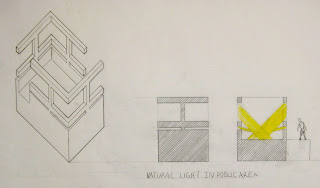Roca Liaison: Christian Calvo
Advisor: Gabriel Bergeron
Collaborating Firm: Loheed Design Partnership
Team Members: Adam Batterbee, Michael Velentzas, Martinas Andriushkiavichus, Jamie Emerson
The Opportunity:
Located in Chelsea, MA, the Roca Community Center’s mission is to make a difference in the lives of very high-risk people and parents between the ages of 14 and 24. By seeking out those that have been ignored, refused, or given up on within Chelsea, Revere, East Boston, and Charlestown, Roca offers them a real alternative to lives of violence and poverty, off the streets, out of gangs, and out of prison. It strives to reengage its youth with intense, positive relationships through which they can learn life skills, gain an education, and find employment. In short, Roca is a leader in doing the right thing.
In that same spirit the organization is now looking to positively improve their facilities. Since their main building, built in 1917, has become outdated, the opportunity to simultaneously make the building more energy efficient while educating a wide range of people has arrived. Introducing environmental building standards such as alternative energy sources, a green roof, day lighting, more efficient HVAC systems, water harvesting, a tighter building envelope, and a permeable parking lot will not only make the center less impactful on the environment, but also will make it an example of intelligent design that the center’s youth can take with them as they move on into the world.

The Process:
Working under the guidance of Phil Loheed, the direction of Gabriel Bergeron, and the aid of Sarah Howard-McHugh, we began to assess the needs of the building. Christian Calvo, Roca’s Director of Sustainable Development and our liaison within the community center, introduced us to the building and communicated Roca’s desire for the building to become more sustainable and energy efficient. To that end, we investigated the existing conditions of the building and researched modern ideas and methods of green construction. We then compiled the information we had gathered and presented it to the Roca community in the form of a video; including them in the process is an important aspect of working with the group.
Furthermore, having shared our information with them allows us to include them in the design phase. In the immediate future we will be running a design charette that will allow the young members of Roca to voice their opinions and have a say in the development of the center. Sharing this responsibility empowers them and furthers Roca’s mission by imparting trust to the participants.
 The Returns:
The Returns:Working on the Roca Community Center has been a significant experience on many levels, from operating within the dynamics of a team, to working directly with the client, to learning about sustainable design. A major aspect of working within the framework of a team of four is the delegation of responsibility. Not only must each team member be accountable, but it also demands clear communication and cooperation; everyone must agree on a direction before proceeding. Similarly, working directly with the client has further connected us to the community, while giving us firsthand experience of how to translate loose ideas into a coherent plan of action. It has given us a greater sense of ownership and control over the project. Finally, the project is demanding that we learn a great deal about green building techniques. In order to bring our ideas to fruition in a real world setting, we must know all the pros and cons of our options.










